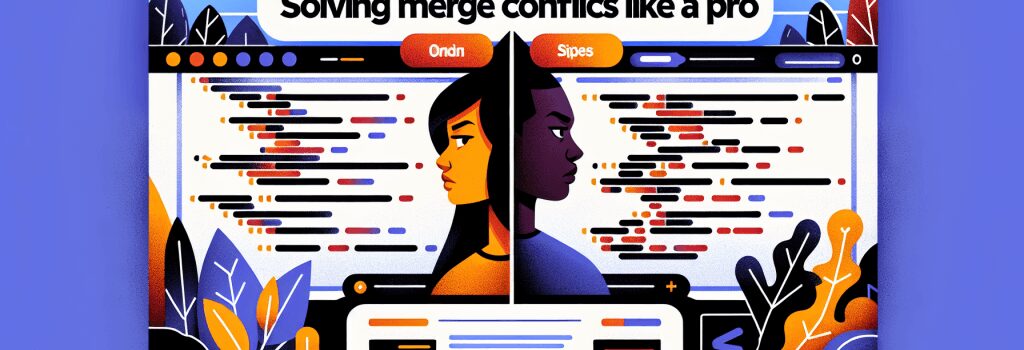Solving Merge Conflicts Like a Pro: Tips for Web Developers

Understanding Merge Conflicts in Web Development
Merge conflicts are an inevitable part of any web development project, especially when multiple developers are working on the same codebase. These conflicts occur when two or more developers make different changes to the same line of code or when one developer edits a file that another has deleted. Understanding how to efficiently resolve these conflicts is crucial for maintaining a smooth workflow and ensuring project continuity.
What Causes Merge Conflicts?
Before diving into the solutions, it’s important to understand what leads to merge conflicts. A common scenario is when developers work in parallel on features that affect the same sections of code. Without proper coordination and communication, these overlapping changes can contradict each other, resulting in a conflict when attempting to merge.
Strategies for Avoiding Merge Conflicts
– Clear Communication: Establish clear communication channels and update your team on the changes you are making. This can significantly reduce the chances of overlapping work.
– Frequent Commits: By committing changes often, you keep your updates small. This not only makes it easier to identify the cause of a conflict but also reduces the scope of overlap with other developers’ work.
– Pull Before You Push: Make it a habit to pull the latest changes from the main branch before you start working and also before you push your changes. This ensures that you’re working with the most up-to-date version and minimizes conflicts.
Solving Merge Conflicts Like a Pro
When faced with a merge conflict, it can seem daunting at first. However, with the right approach, you can resolve conflicts efficiently and keep your project on track.
Understand the Conflict
– Read the Error Message: Git will clearly tell you which files have conflicts. Start by understanding the files and sections of code involved.
– Analyze the Changes: Look at the differences between the conflicting changes. Understand what each change is trying to achieve and how they conflict with each other.
Using Git Tools to Resolve Conflicts
– The Git Merge Tool: Git offers built-in tools like ;git mergetool> that provide a graphical or text-based interface to help you navigate and resolve conflicts.
– Manual Resolution: Sometimes, the best way to handle a conflict is to manually edit the files. Git marks the conflicting area in the file, showing both versions of the conflicting lines. You’ll need to manually choose which change to keep, or possibly combine the changes if both are necessary.
Best Practices for Conflict Resolution
– Don’t Rush: Take your time to understand the conflict and the implications of the changes you decide to keep.
– Communicate with Team Members: If the conflict involves changes made by another developer, discuss it with them. Collaboration can lead to a better understanding of the conflict and a more suitable resolution.
– Test After Resolving: Always test your code after resolving a conflict to ensure the integrity of the project isn’t compromised.
Conclusion
Merge conflicts are a normal part of the web development process, but they don’t have to disrupt your workflow. With effective communication, regular commits, and a good understanding of Git’s conflict-resolution tools, you can handle these situations like a pro. Remember, the goal is not just to resolve the conflict but to maintain or even improve the quality and functionality of the project. With practice and experience, solving merge conflicts will become a seamless part of your web development journey.


